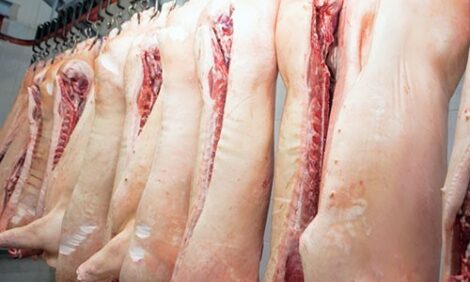



New digital game shows weak links in farm biosecurity
New experimental game highlights success and loss through decision-making in livestock biosecurity practices amidst environmental and social uncertainty."“The overarching question is, how does human risk attitude affect the adoption of biosecurity and the ability to control disease spread?”"
-Gabriela Bucini, University of Vermont-
The new biosecurity choices game, developed by the University of Vermont and reviewed in PLoS ONE, allowed researchers to examine the willingness of industry stakeholders to invest in biosecurity when confronted with disease outbreak scenarios.
Gabriela Bucini, a postdoctoral researcher at the University of Vermont, spoke to National Hog Farmer: “The human attitude and response to risk can substantially influence the level of efficacy of biosecurity,” she explained. “The aggregate actions by everyone working on and coming onto a farm can make the difference in controlling disease spread, from the single farm all the way to a production system.”
The multistate-coordinated agricultural project was funded by the USDA National Institute of Food and Agriculture. Initial rounds of the study examined the behaviour of the tactical personnel – the administrators, managers and coordinators on-farm; and the strategic personnel – the president, partners and directors in swine operations, after which strategic computer games were developed to test the hypotheses developed by researchers.
According to Merrill et al. (2019), serious games (as opposed to recreational games) are increasingly employed as research tools in studies of human behaviour and decision-making. Economic experiments, which are analogous to serious games, have been used for decades to better understand uncertainty and decision-making behaviours.
The game
All participants viewed the same pre-recorded narrated slideshow, which provided an overview of the hog industry and explained game play and the cash payout. Participants were informed that they would be acting as managers of a hog production facility with a goal to maximise their economic return by balancing two factors: costs associated with implementing biosecurity practices and costs for any losses caused by the existence of the disease on their simulated facility. No specific disease was named, but participants were told that disease transmission was airborne.
Participants each played 18 treatment rounds. Each round consisted of 11 biosecurity adoption decisions, simulating monthly decisions from February through December of a single year. In each month, participants made an investment decision regarding biosecurity at their facility. Participants could choose “no action” or they could invest in biosecurity. Only one investment could be made per month. Level 0 was the initial starting point with no biosecurity implemented (0 percent reduction in the probability of acquiring an infection). Increasing biosecurity to Level 1 by investing in a Disease Management Protocol reduced the probability of infection by 10 percent. Increasing biosecurity to Level 2 by investing in a Cleaning and Disinfecting Protocol reduced the probability of infection by 40 percent. Increasing biosecurity to Level 3 by investing in a Shower in/Shower out Protocol reduced the probability of infection by 90 percent. Even with the maximum biosecurity adopted by the participant (Level 3), their facility’s hogs could still become infected, which reflects realistic conditions.
Play during the treatment rounds contributed to the participants’ experimental earnings or losses, and generated data that were subsequently analysed. To reduce the effect of the order of play and any strategic learning that occurred during game play, the 18 treatment scenarios were randomised.
Results and conclusions
- Increased communication and sharing of information might not always result in increased biosecurity.
- Communication strategies must be designed thoughtfully and with careful audience analysis.
- Willingness to invest in heightened biosecurity increases with increased awareness of disease incidence in the system, but decreases with increased awareness of biosecurity practices in place at nearby facilities.
- Policy makers aiming to enhance industry biosecurity may be successful by communicating the incidences of diseases and infection outbreaks to livestock owners/managers.
- Dissemination of information about biosecurity practices used at other facilities should not be actively encouraged, because these results suggest that information sharing in this domain may result in decreased investment in biosecurity.
| References | ||||
|---|---|---|---|---|
| Scott C. Merrill, Christopher J. Koliba, Susan M. Moegenburg, Asim Zia, Jason Parker, Timothy Sellnow, Serge Wiltshire, Gabriela Bucini, Caitlin Danehy, Julia M. Smith. | ||||
| (2019) | Decision-making in livestock biosecurity practices amidst environmental and social uncertainty: Evidence from an experimental game. |








